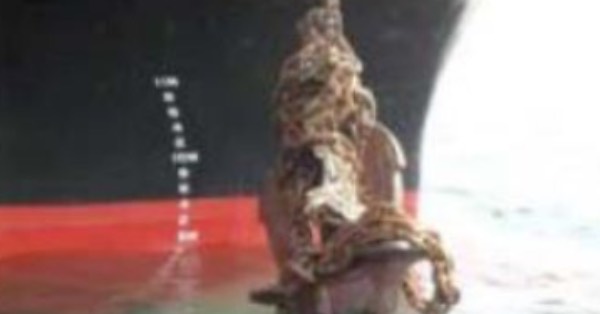There has been a negative trend in the loss of anchors and chains in recent years. The safety, environmental and financial consequences can be severe, and port authorities may hold a vessel responsible for all costs caused by a lost anchor for an unlimited period of time. This technical news focuses on operational challenges, current rules and practices, awareness, lesson learned, and recommendations related to anchor equipment damages/losses.
Relevant for owners, managers, design offices, shipyards and suppliers.
DNV, Gard and The Swedish Club arranged an anchor awareness campaign in 2016 identifying the most frequent technical and operational issues and recommendations for the safe operation of anchors and anchor equipment (see link below).
However, over the last years, especially from 2019 to 2020, an increase of more than 20% of anchor losses/damages has been noted. This high increase may be partly explained by environmental events and the COVID-19 pandemic, where periods spent waiting at anchorage outside ports have increased for some ships, or ships have been temporarily laid up for shorter or longer periods. But for most anchor losses, current rules and best practices have not been adhered to.
Investigations into the root causes of loss of anchor have shown that in most cases, the environmental conditions exceeded the criteria for safe anchoring:
Events causing loss of anchor (Source: The Swedish Club)
There is a general lack of awareness of the environmental loads for which anchoring equipment is designed. Class societies have unified rules for the design of anchoring equipment.
Key principles for safe anchoring
Below are some key principles for safe anchoring, based on DNV Class Rules and IACS Recommendations (references: see below):
Design and selection – rules assumptions and limitations, designed for temporary anchoring in harbour
- Current velocity: max. 2.5m/s (5 knots)
- Wind velocity: max. 25m/s (48 knots)
- No waves
- Length of chain paid out scope 6–10
- Good holding ground
However, many anchoring locations are outside sheltered waters, and an equivalent environmental envelope, including wave loads, was found as given by:
- Current velocity: max. 1.5m/s (3 knots)
- Wind velocity: max. 11m/s (21 knots)
- Significant wave height: max. 2m
To achieve the necessary anchor holding power, it is essential that the anchor chain and the fore-runner remain horizontal on the seabed and that good holding ground is available. The ratio between water depth and the length of the chain – the scope number – is a key factor in ensuring this, and class guidance is 6 to 10 scopes.
Furthermore, the anchor winch motor is typically designed to lift the anchor and three lengths of chain (82.5m). The 2016 study referred to above revealed that there have been several cases in which the anchor winch was not able to recover the weight of the anchor and the chain due to anchoring in waters that were too deep.
Preventing anchor losses and damages
Some awareness and key focus areas for preventing loss of anchor are listed below:
- Leave anchorage in time!
- When temporary laid up, periodically clearing the chain of twists should be noted, it is recommended to heave the anchor once per week.
- Check the anchor carefully when in dry dock for wear and tear.
- Check the securing of the D-shackle pin as often as possible.
- Adjust the brake band when the lining is worn.
- Read the anchor equipment procedures.
- Replace the brake lining when required, without delay.
- Check the condition of all devices for holding the anchor tight in the hawse pipe.
- Second-hand anchors or chains should not be installed on board the vessel.
- Watch out for fake certificates. The price of the anchor or the chains may be an indication of the quality.
Also refer to the “Anchor loss – Technical and operational challenges and recommendations” presentation (see link below).
Recommendations
- Know the limitation of the anchoring equipment and when to leave the anchorage:Make sure that the deck officers know the maximum environmental envelope the equipment can hold, and make sure this is reflected in the shipboard anchoring procedures. If anchoring at one location for more than one week, the anchor should be heaved up to avoid twisting of the chain
- Training of crew: Properly implement routine inspections and maintenance of essential components of the anchoring equipment. Class should always be contacted when repairs are to be carried out on the anchor and chain.
- When ordering new ships: Evaluate the possible need for increasing the anchoring equipment beyond minimum IACS class requirements, especially if you will be anchoring in deep waters.
Source: DNV










































